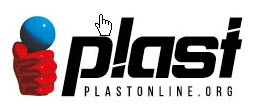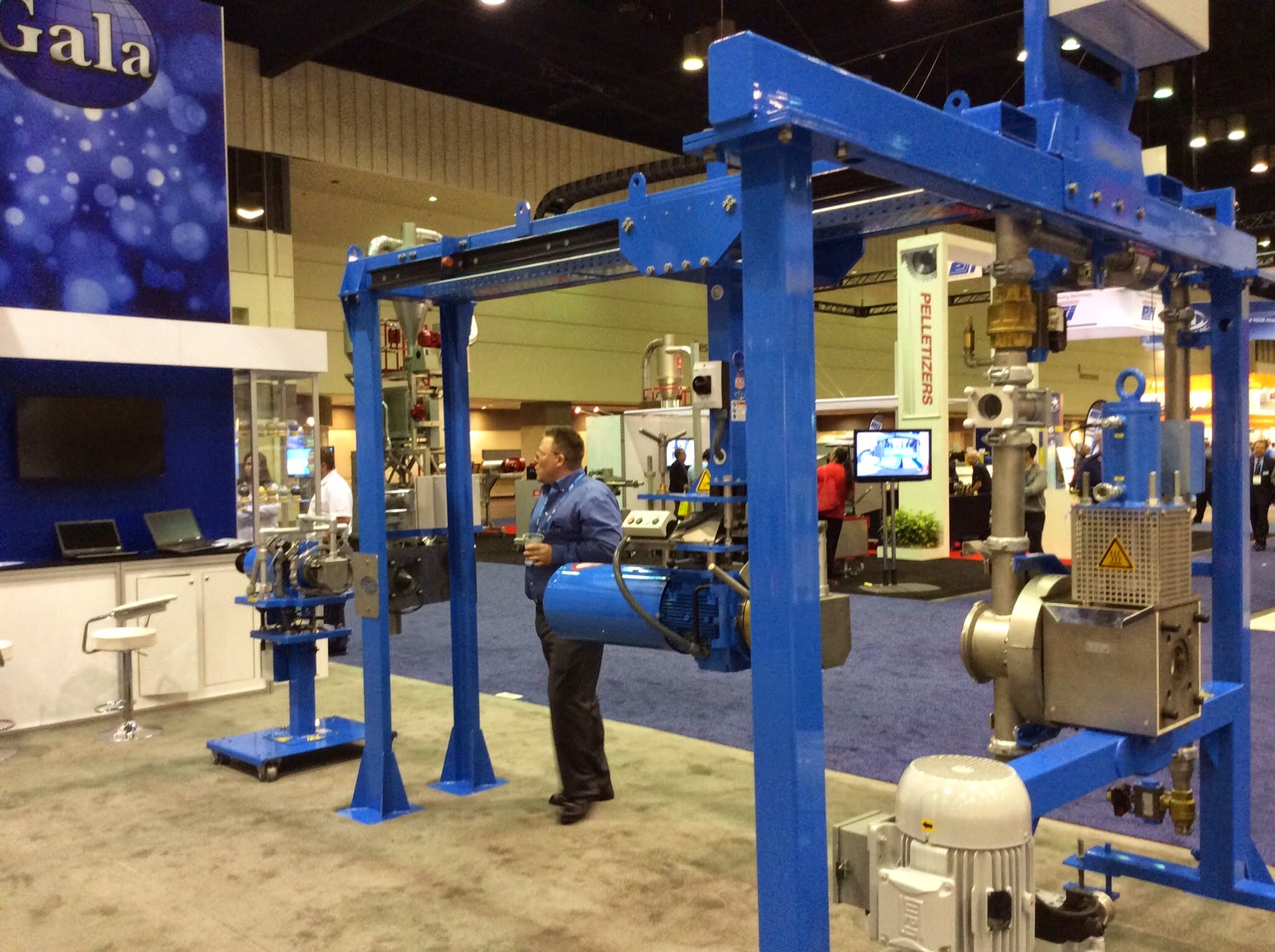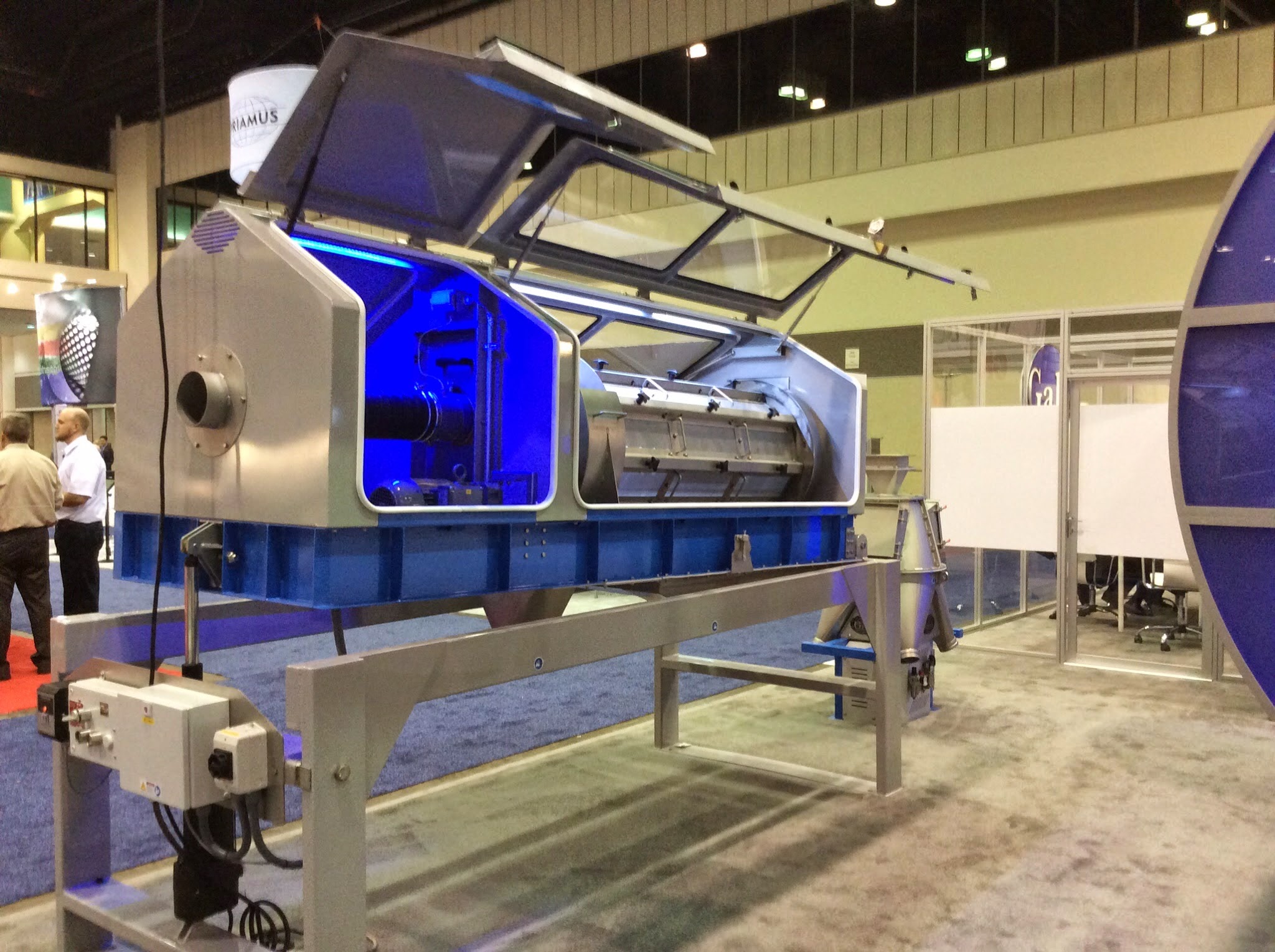NPE 2015
Gala Industries Exhibited New Solutions for Pellet Production at NPE 2015
Gala Industries, Inc., a global leading manufacturer of pellet production systems for the plastic industry, unveiled its three new solutions for the production of plastic pellets. The new Model G3 Pelletizer, the new Rotational Valve and the new TUMBLER were, all of them, presented at the NPE 2015 International Plastics Showcase in Orlando Florida.
Gala exhibited its new solutions at its W 5882 booth where current and future customers had the chance to see and touch the machinery as well as interact with the company’s technical and commercial staff.
The exhibited solutions included: New Model G3 Pelletizer: The G3 pelletizer is the physical size of a Model 6 pelletizer yet designed to pelletize double the pellet rate. Gala’s Model 6 Pelletizers are designed for pellet production rates up to 1.800 kg/hr; the Model 7 Pelletizers yield up to 6.000 kg/hr. The G3 bridges that pellet production rate gap between the Model 6 and the Model 7. Production rate for the G3 is from 500 up to 3250 kg/hr. An added benefit of the G3 is it shares many common parts with the Model 6 pelletizer to reduce costs. The G3 is available with manual blade adjustment (MAP), electric blade adjustment (EAC) and spring loaded blade adjustment (SLC). Gala developed the G3 Pelletizer to provide our customers who are operating in this capacity range a lower cost alternative that will provide a higher rate of return on their investment.
New Rotational Valve: The Rotational Valve has a single inlet and multiple outlets. Pellet and fluid slurry flows into a rotating nozzle which directs the slurry to a hopper connected to an outlet. The rotating nozzle is connected to an encoder which indicates to the power control system which hopper is being used. The outlets are connected to different tanks in Gala’s Pellet Conditioning System (PCS). Gala’s PCS consists of multiple tanks that are gravity fed a slurry of pellets and fluid in a sequential pattern. The pellets in this slurry may be tacky and can stick together if the pellets are not kept moving. A pipe manifold controlled with full port ball valves has been used in the past, but pellets sometimes lay stagnant in a line not currently being filled, causing a blockage. Gala engineered the Rotational Valve as a solution this problem.
New TUMBLER: The TUMBLER features an octagon shaped drum equipped with optional mixing blades which creates optimum tumbling/mixing characteristics. The drum speed can be changed from 10 to 50 RPM. There are three (3) row sets of screens with eight screens each, which can be blanked off as necessary depending on the circumstances. The drum is shaft driven by a 4 HP geared motor. Lightweight aluminum housing with easily accessible doors makes for easy cleaning and maintenance. Large door windows and interior lighting allows for easy observation during operation. During preliminary testing rates of up to 4000 lbs /hr were achieved. Electric or manual leveling jack allows for -3º to 3º of tilt to allow for different pellet retention times in the tumbler. Longer retention times allow bagged pellets to return to room temperature before bagging, which eliminates condensation buildup.
Dual blowers can be equipped for removing excess coating powder as well as drying of brittle materials. An air duct internal to the drum increases powder removal and drying capabilities.
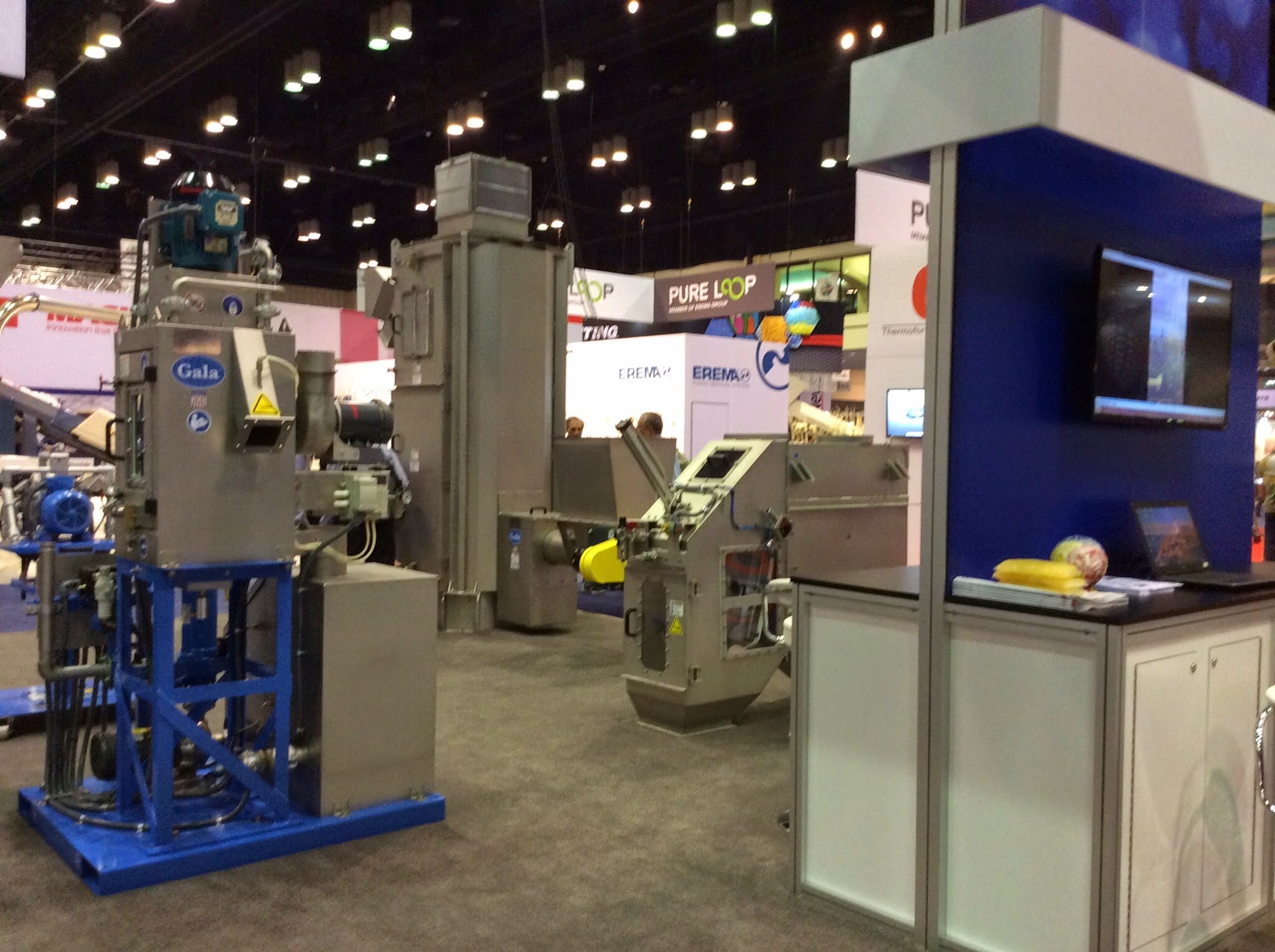
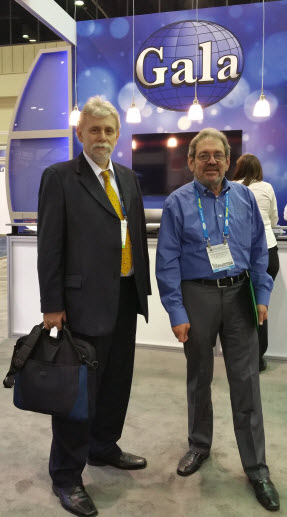
Horacio Gutierrez, Export Manager, Gala; Eduardo Gils, AmericaPlast
“The Tumble dryer is a remarkable innovation presented by Gala in this NPE exhibition, as it allows to dry delicate products like fragile materials minimizing the risk of breaking the pellets”, Gala Latin America Manager, Horacio Gutierrez, said.
Gala is a global company with more than 50 years of innovative activities. The company is based in Eagle Rock, Virginia, USA and also counts with international branches in Germany and Thailand.
“ Brazil is a country where we have a strong activity, even under the current recessive scenario , so our expectations in relation to Brazil and the rest of the Latin America countries are really good”, Gutierrez added.
Gala is the world’s leader for underwater pelletizing systems, and getting that position requires a strong commitment to innovation.
According to Horacio Gutierrez, Gala is running an active innovation process. Collaboration with customers and experts from Universities in United States and Europe is the way to be customer focused in order to provide the right solution to every customer.
Gala pelletizing systems are deployed in 82 countries around the world.
For more information about Gala please visit www.gala-industries.com
Contact: This email address is being protected from spambots. You need JavaScript enabled to view it.
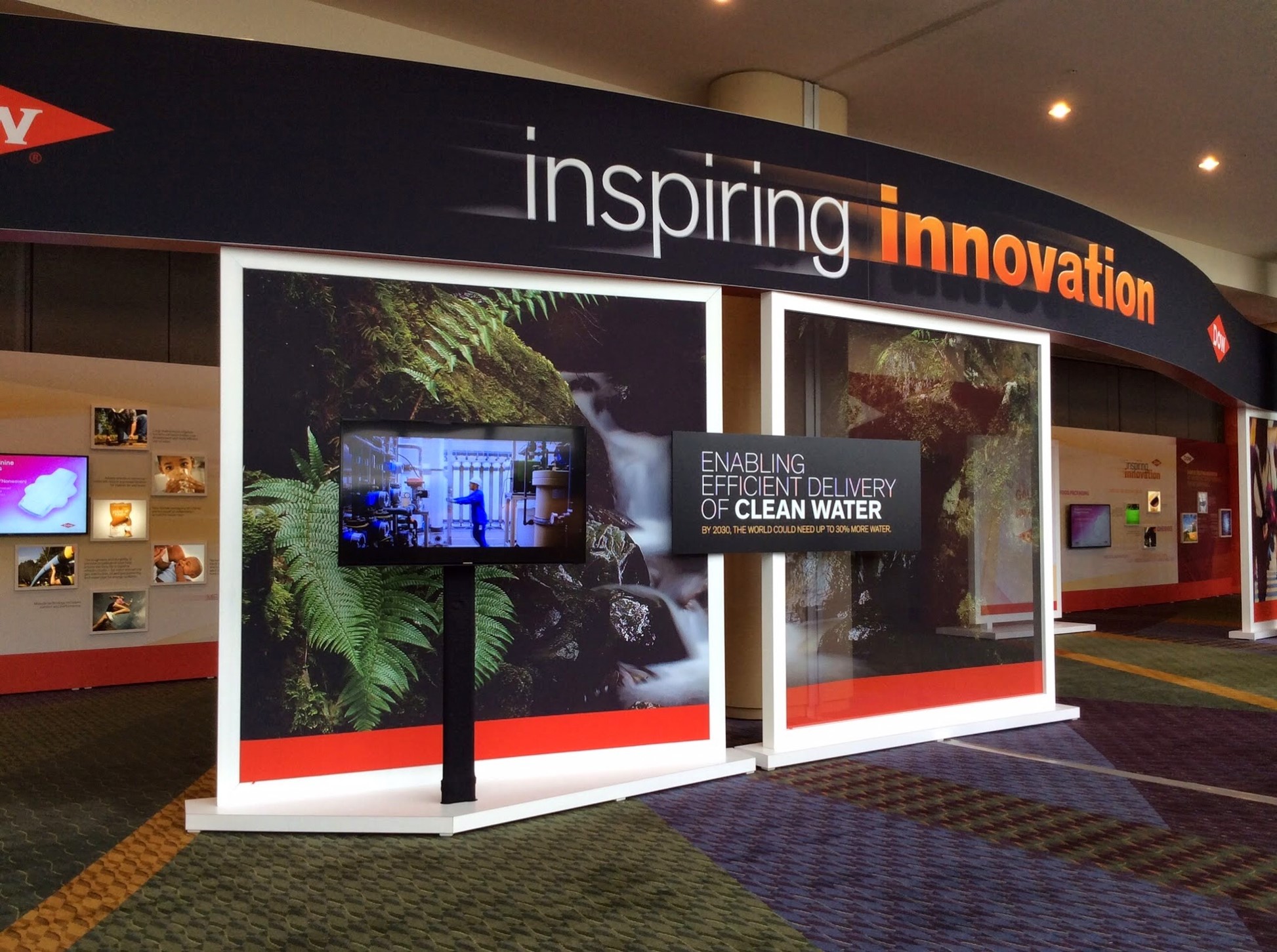
Dow Chemical Showcases Innovative Artificial Turf at NPE 2015 Interactive Gallery Walk
Dow exhibited its leading Performance Plastics Technologies and Solutions including its innovative artificial turf during the NPE 2015 International Plastics Showcase in Orlando, Fla. The artificial turf, which is based on the company's polyethylene (PE) and polyurethane (PU), will be the official playing surface for hockey competitions during the Rio 2016 Olympic Games.
Dow’s Performance Plastics is demonstrated to be one of the world’s largest and most differentiated plastics portfolio and it is strategically aligned with fast-growing markets including food packaging, personal hygiene, consumer durable goods, automotive, and infrastructure.
Under the banner of “Inspiring Innovation,” Dow illustrated how its approach to research and development, sustainability and value chain collaboration expedites the development of breakthrough solutions to world challenges. Dow also showcased its growth projects that will strengthen its ability to support customers around the world.
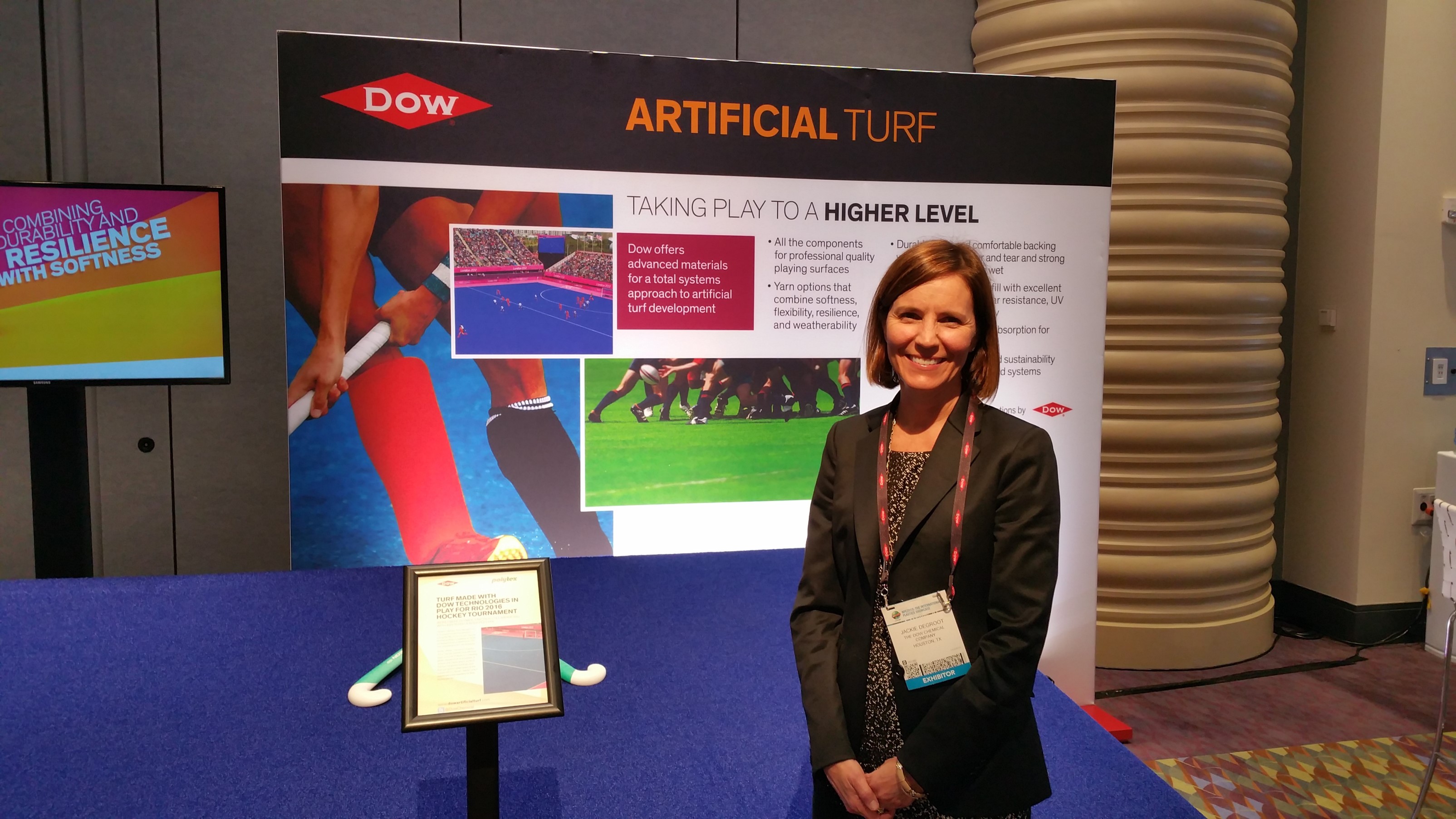
Jackie deGroot, senior development scientist, Dow Chemical
Visitors at the NPE 2015 Show had the opportunity to experience Dow’s Interactive Gallery Walk. There, visitors witnessed the performance and processing advantages of Dow’s next-generation resin products via demonstrations on leading machine manufacturers’ equipment lines. Visitors could also feel the new artificial turf solution and learn about the technical aspects of the material to be used in Rio 2016 Olympic Games from Dow Chemical experts.
RIO 2016 OLYMPIC GAMES ARTIFICIAL TURF
Durability
The playing surface consists of specific high-performing materials formulated together in multiple layers. The surface system is designed to deliver enhanced durability for increased pitch life, and a consistent field-of-play throughout the busy Olympic competition schedule.
“Durability is one of the key benefits of artificial turf playing surfaces versus grass field, and this durability provides consistency at play,” said Jackie deGroot, senior development scientist, Hygiene and Medical TS&D, Dow Chemical. “What that means to the players is, from game to game, they can expect same surface behavior, and this is very important in elite games like the Olympics.”
Production
The production of synthetic turf is a highly-elaborated process. The system begins with the production of the masterbatch and the yarn for the turf. The subsequent tufting and backing process provide a strong turf bind, even when the surface is wet. For the upper surface layer, the polymer yarn provides wear resistance and energy absorption, combined with softness and speed. The complete turf system, including embedded shock pad properties, provides stability, durability, shock absorption and force reduction properties for the benefit of the players and the game.
According to deGroot, there are technical requirements for the polymer to be used. For instance, it has to be pressure-resistant which means being tear resistant and resilient or the ability to be bent back after being strained. Abrasion resistance is another required property.
Color
deGroot said that another important aspect is the necessity to use vibrant colors for visual benefits, such as the blue color, in order to provide a nice contrast between the playing field and the ball.
The internationally-certified artificial turf system offers colorability, enabling customized aesthetics and design for the playing surface. London 2012 marked the first Olympic hockey competition in history to be played on blue and pink turf. The blue color enabled players, officials, spectators and the media to keep their eyes on the ball more easily, because it provided a high level of contrast against the yellow ball and white lines.
“We are very excited about our polymer’s ability to accept the required pigment to achieve the desired effect,” deGroot said.
She added that the turf is a sustainable solution because it is an alternative to natural grass, which would require other elements such as water, fertilization and other additional care.
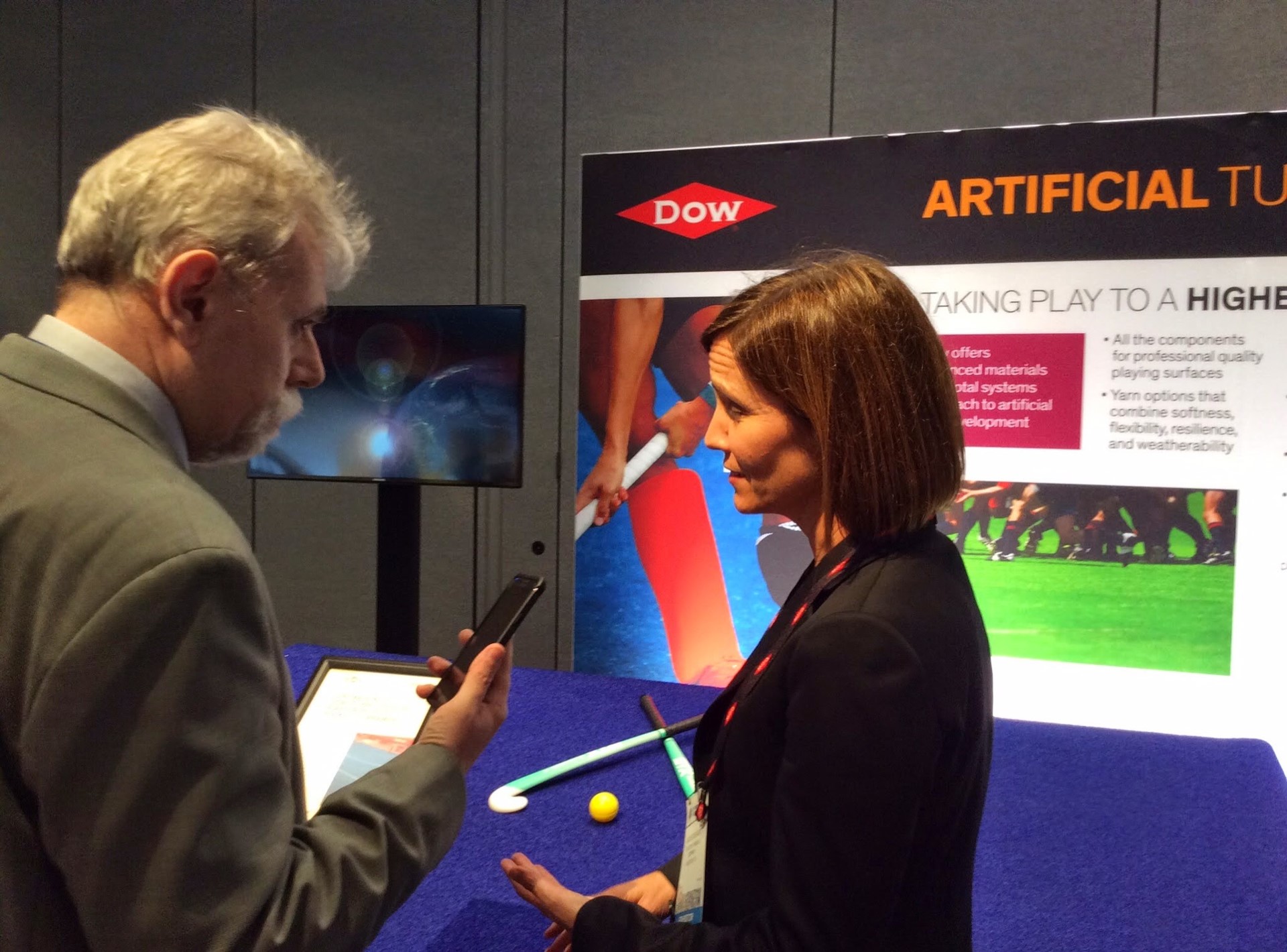
Jackie deGroot, senior development scientist, Dow Chemical; Eduardo Gils, AmericaPlast
Dow Chemical is the Official Chemistry Company of the Olympics Games and Dow became Worldwide Partner of the Olympic Games in 2010.
“Our unique position as the Official Chemistry Company of the Olympic Games and a global leader in the plastics industry, combined with our customer’s experience in artificial playing surfaces, enables us to deliver the best turf conditions for the world’s greatest athletes – in hockey and other sports,” said Ana Carolina Haracemiv, global marketing director, Dow Packaging & Specialty Plastics. “The solution we developed together is durable, low maintenance, stays consistently flat and fast from game to game, and requires no watering - compared to natural grass.”
Click HERE to listen Jackie deGroot, TITULO, presentation at Dow Chemical Interactive Gallery Walk at NPE 2015. http://new.livestream.com/Americaplast/NPE2015
For more information about Dow visit www.dow.com


